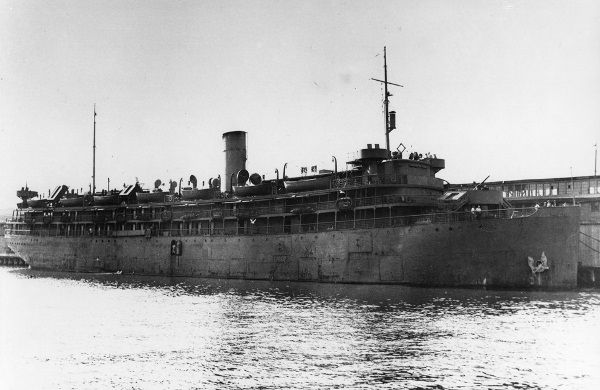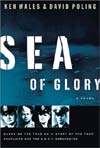Dorchester
American Troop transport

Photo courtesy of Naval History and Heritage Command
| Name | Dorchester | ||
| Type: | Troop transport | ||
| Tonnage | 5,649 tons | ||
| Completed | 1926 - Newport News Shipbuilding & Dry Dock Co, Newport News VA | ||
| Owner | Merchants & Miners Transportation Co, Baltimore MD | ||
| Homeport | Baltimore | ||
| Date of attack | 3 Feb 1943 | Nationality: | |
| Fate | Sunk by U-223 (Karl-Jürg Wächter) | ||
| Position | 59° 22'N, 48° 42'W - Grid ÄA 3852 | ||
| Complement | 904 (675 dead and 229 survivors). | ||
| Convoy | SG-19 | ||
| Route | St. John’s, Newfoundland - Narsarssuak, Greenland | ||
| Cargo | Troops, 60 bags of mail and parcel post, lumber and 1069 tons of general cargo | ||
| History | Completed in July 1926. In February 1942 time chartered as US Army Transport (USAT). | ||
| Notes on event | At 04.52 hours on 3 February 1943 U-223 fired five single torpedoes at the three ships in convoy SG-19 about 150 miles west of Cape Farewell. One of the first torpedoes hit the Dorchester and the other torpedoes missed her and the Norwegian steam merchants Biscaya and Lutz. The Dorchester (Master Hans Jorgen Danielsen) was struck on the starboard side in the machinery spaces. The explosion stopped the engines and the vessel swung to starboard, losing way. Six blasts from the whistle indicated to the rest of convoy that the Dorchester was hit. Her complement of seven officers, 123 crewmen, 23 armed guards (the ship was armed with one 4in, one 3in and four 20mm guns) and 751 troops and civilian passengers began to abandon ship three minutes after the hit. Three of the 14 lifeboats had been damaged by the explosion, the crew managed only to launch two more overcrowded boats and 33 men left with rafts, but many men evidently did not realize the seriousness of the situation, stayed aboard and went down with the ship, which sank 30 minutes later. USCGC Escanaba (WPG 77) and USCGC Comanche (WPG 76) began rescuing survivors within minutes. Rescue swimmers in rubber suits from USS Escabana jumped into the icy water with lines tied about them to pull incapacitated men out of the water. She picked up 81 survivors from the water and rafts and 51 from one lifeboat. USS Comanche picked up 41 survivors from another lifeboat and 56 from rafts and the water. Hundreds of floating bodies or frozen to wreckage were checked for signs of life. The survivors were landed at Narsarssuak later the same day. 675 lives were lost: the master, three officers, 98 crewmen, 15 armed guards and 558 troops and passengers. The following were saved: three officers, 25 crewmen, 44 civilian workers, three Danish citizens, twelve armed guards, seven US Coast Guard personnel and 135 US Army personnel. Four Army chaplains representing the four different faiths: RevLt George Lansing Fox (Methodist); Rabbi Lt Alexander David Goode; RevLt. Clark Poling (First Reformed Church) and Father John Washington gave up their lifebelts to soldiers who have none, all four perished with the ship. All were posthumously awarded the Purple Heart and the DSC. In 1961 the US Congress declared the 3 February four Chaplains Observance Day and The Chapel of the Four Chaplains was established in Philadelphia. | ||
| More info | |||
| On board | We have details of 897 people who were on board. | ||
If you can help us with any additional information on this vessel then please contact us.
Media links
|
As an Amazon Associate uboat.net earns a commission from qualifying purchases.

